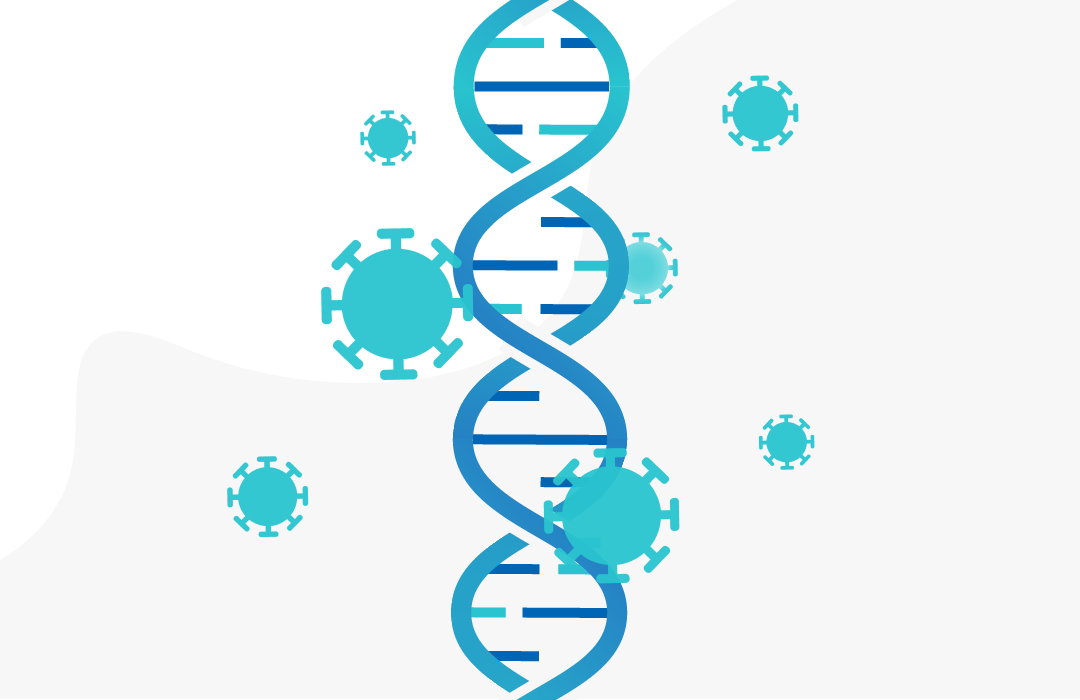
7 ways to improve diet quality and protect against COVID-19
July 13, 2021

This article has not been updated recently
Thanks to our ZOE COVID Study app contributors, we’ve recently discovered that eating a plant-rich diet helps to protect against COVID-19.
Our research found that people who eat a high quality, plant-rich diet are less likely to catch COVID-19 or end up in the hospital with it.
Researchers discussed the findings in a recent webinar. Read more about diet and COVID risk here.
We asked nutrition researcher and registered dietitian Emily Leeming from King’s College London, who worked on the diet and COVID study, to share some quick and easy ways to improve the quality of your diet and get more greens (and beans!) onto your plate.
Which foods help protect against COVID-19?
A high quality, plant-based diet includes chowing down on more healthy plant-based whole foods - such as fruits, vegetables, legumes (beans and pulses), seeds and whole grains. It also includes eating oily fish and fewer highly processed foods.
Our findings show that eating like this is associated with a lower risk from COVID-19. We also know from our nutrition work that eating more plants is better for our gut microbiome and overall heart and metabolic health.
7 easy tips to improve your diet
1. More things than you realise count as plants!
Boosting your daily intake of plants is the quickest way to improve the quality of your diet. This doesn’t have to be difficult. Plant-based food includes spices, herbs, nuts and seeds - as well as fruit, veg and leafy-foods.
“Think about what will work for your routine,” says Emily. “Can some of your typical dinners aim to have half the plate as vegetables? Could you add seeds or berries to your usual yoghurt or porridge in the morning? And how about making toast with seeded bread?”
2. Plan snacks ahead
Keeping healthy snacks on hand is an easy way to improve your diet quality.
“Snacking on nuts and seeds is a quick way to increase the number of plants in your diet so try keeping a pack in your bag or on your desk,” suggests Emily.
For bigger snack cravings try hummus with vegetable sticks or crackers, and sliced apple or banana with nut butter. Pick things that you know you’ll enjoy without feeling deprived. There’s nothing worse than an unsatisfying snack!
If you’re searching for snacking inspiration, check out our nutritionist-approved snack ideas.
3. Pantry staples are the fastest way to wholegrains
Wholegrains are an important part of a high quality diet. Luckily for us, wholegrain options of bread, pasta and rice are all available.
“If you tend to buy white or basmati rice, why not try brown rice one week,” Emily says. “Similarly for bread, if your go-to loaf is white, try mixing it up with a wholegrain, seeded or sourdough.”
As a clever tip, Emily suggests keeping the new loaf in the freezer so you can swap in the wholegrain version as and when you like rather than having to change things completely overnight.
4. Bulk out with beans
Tinned beans are the underrated superheroes of a healthy diet. They’re a quick and cheap way of upping the number of plant-based foods you eat.
When making your usual dishes try adding in new or extra beans into the mix. No need to remove meat completely, but try halving it and bulking the rest out with beans or lentils.
“Keep things interesting by exploring the variety of beans that are available nowadays,” Emily suggests. “If you tend to buy chickpeas each week, try adding a new tin to your trolley - for example black beans, butter beans or cannellini beans.”
5. Don’t underestimate frozen
Frozen fruits and vegetables are just as (if not more) nutritious than their fresh counterparts. As well as being more affordable, frozen fruit and vegetables last longer.
If you’re short on time when cooking, having a frozen bag of your favorite veggie to hand is an easy way to get more plants on your plate.
“Frozen vegetables can also be used to bulk out meals you have regularly, such as adding cauliflower to mashed potato or popping some frozen peas or sweetcorn into rice for the last five minutes of cooking.”
6. Choose healthier fats
Fat has a bad reputation, but it is an important part of a healthy diet. Omega-3 fats, found in fish and other seafood, nuts, seed and plant oils, support the immune system and heart health.
“Oily fish, such as salmon and trout, are some of the best sources of omega-3 fats,” Emily explains. “If you don’t eat fish, you can also get omega-3 from plant sources like flax seeds and walnuts, although they’re slightly harder for our bodies to take up.”
7. Make less room for highly processed foods
As a general rule, the more processed a food is, the less healthy it is for you and your gut.
Highly processed foods and drinks can contain high levels of refined sugar, saturated fats, salt, and chemical additives, so it’s a good idea to switch them out for less processed alternatives where possible.
Finally, here at ZOE we believe food is there to be enjoyed.
“Don’t stress about trying to completely cut out certain foods or making yourself feel miserable, hungry and deprived,” Emily says. “It’s more important to make small and sustainable healthy changes to what you eat that you’ll enjoy and stick to in the long term, as well as benefiting your health.”
For more tips on improving your diet and gut health, check out Professor Tim Spector’s top 5 tips and our nutrition blog.












.png)


.jpg)














.png)







%202.png)
.png)

















.png)




%20(1).png)


